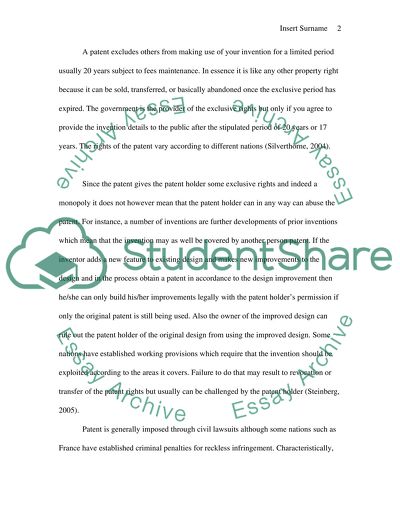Cite this document
(“Legal Aspects of Patent Rights Essay Example | Topics and Well Written Essays - 2000 words - 1”, n.d.)
Legal Aspects of Patent Rights Essay Example | Topics and Well Written Essays - 2000 words - 1. Retrieved from https://studentshare.org/law/1553756-law-essay
Legal Aspects of Patent Rights Essay Example | Topics and Well Written Essays - 2000 words - 1. Retrieved from https://studentshare.org/law/1553756-law-essay
(Legal Aspects of Patent Rights Essay Example | Topics and Well Written Essays - 2000 Words - 1)
Legal Aspects of Patent Rights Essay Example | Topics and Well Written Essays - 2000 Words - 1. https://studentshare.org/law/1553756-law-essay.
Legal Aspects of Patent Rights Essay Example | Topics and Well Written Essays - 2000 Words - 1. https://studentshare.org/law/1553756-law-essay.
“Legal Aspects of Patent Rights Essay Example | Topics and Well Written Essays - 2000 Words - 1”, n.d. https://studentshare.org/law/1553756-law-essay.


